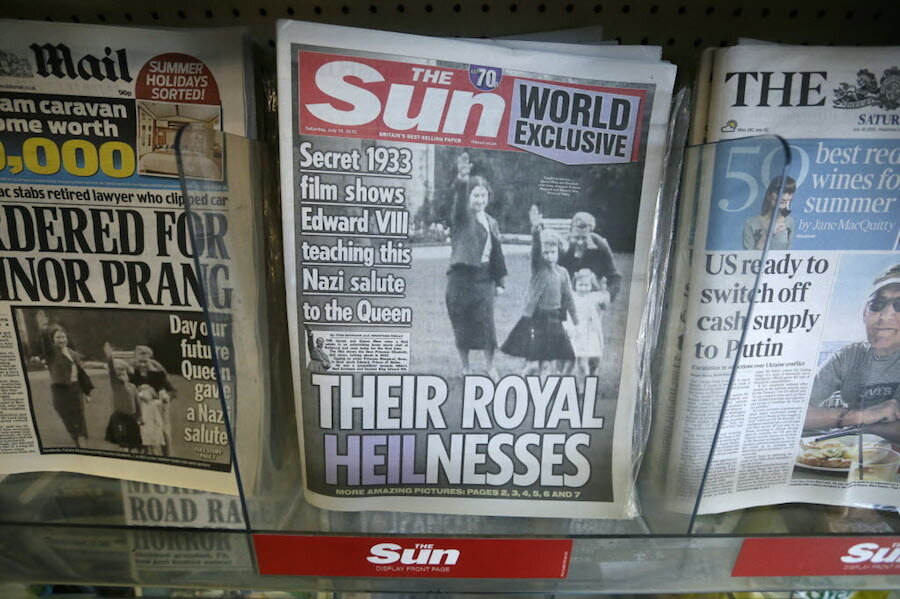Queen Elizabeth's Nazi salute: What it tells us about Uncle Edward
Loading...
A British Tabloid made a daring decision Friday when it released decades-old footage of Queen Elizabeth II giving a Nazi salute at the young age of seven.
The Sun justified the publication saying that it shed new historical light on the relationship that the Prince of Wales, who would later be crowned King Edward VIII, had with Adolf Hitler.
Shot in 1933, the same year Hitler became chancellor of Germany, the short black-and-white clip shows the future Queen playing at the Balmoral castle alongside her mother, little sister Princess Margaret, and uncle Edward, then Prince of Wales.
The Sun’s daily print paper published a still image taken from the footage on its front page with the headline, "Their royal heilnesses."
In an interview with The Sun, historian Karina Urbach, a fellow at the London-based Institute of Historical Research, suggests Edward encouraged his family to perform the salute before raising his arm himself.
The tabloid has since faced a backlash for exposing the controversial video.
"It is disappointing that film, shot eight decades ago and apparently from Her Majesty's personal family archive, has been obtained and exploited in this manner," reads a statement by Buckingham Palace.
Yet The Sun quickly defended its decision in an article posted hours after it released the footage.
“These images have lain hidden for 82 years. We publish them today, knowing they do not reflect badly on our Queen, her late sister or mother in any way,” stated The Sun.
“They do, however, provide a fascinating insight into the warped prejudices of Edward VIII and his friends in that bleak, paranoid, tumultuous decade.”
According to Ms. Urbach, “Edward was already welcoming the regime as Prince of Wales in 1933 and remained pro-Nazi after war broke out in 1939.”
Yet critics retort that the video shouldn’t be seen as evidence of Edward’s support for the Nazi regime.
“It is true that the weak, self-indulgent and selfish Duke of Windsor – as he became after the Abdication of December 1936 – had some admiration for Hitler, and that Hitler saw him as an ideal puppet king in the event of a German conquest of Britain,” writes The Telegraph’s Simon Heffer.
“However there is no historical evidence whatever of the future Duke of Windsor having any Nazi sympathies in the early months of Hitler’s rule,” Heffer adds.
However, Heffer unknowingly reiterated Urbach’s reasoning for supporting the The Sun’s decision to publish such controversial footage: a lack of historical evidence.
“To this day, we don’t know much about the political opinions of the Royal family of the 1930s,” Urbach says. “So far, we haven’t had any access to the Royal archives. There has been awful censorship.”
There have always been conspiracy theories about the Duke of Windsor but one could never ever prove his betrayal.
I was very lucky to find in Russian and Spanish archives proof that he did discuss an alliance with Hitler in 1940.
He spoke to a Spanish diplomat saying, ‘This war has to end at all costs and the best way to end the war would be for the Germans to bomb Britain.’
That was a horrible betrayal to his own country.”
Urbach stresses that the footage “should be in the public domain” in order to promote historical research.
Yet a royal source told The Telegraph that the video shouldn’t be taken out of context to suggest anything greater than what it portrays.
"Most people will see these pictures in their proper context and time. This is a family playing and momentarily referencing a gesture many would have seen from contemporary news reels," a royal source said.
"If you watch the film it is people laughing and joking around and playing, and it was one of the things of the day. No one at that time had any sense how it would evolve. To imply anything else is misleading and dishonest."







